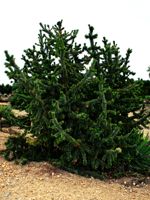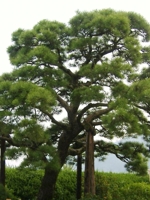Mon-Fri 9am - 5pm Mountain time
Bristlecone Pine vs Japanese Black Pine
Pinus aristata
Pinus thunbergii
NOT AVAILABLE THIS SEASON - MIGHT RETURN
(new stock expected: fall of 2027)
NOT AVAILABLE THIS SEASON - MIGHT RETURN
Bristlecone Pine is a small to medium evergreen with an irregular habit and contorted branches.
This extremely long-lived tree is relatively low maintenance and drought-tolerant.
It is known for its deep green to blue-green needles flecked with white resin, and its thin, scaly, grey-brown bark. Because it is extremely slow-growing, Bristlecone Pine is well suited to smaller properties.
Japanese Black Pine is known for its unique and irregular growth habit, making it a striking landscape addition. It typically does not grow with a central leader. This causes it to form a flat-top, classic bonsai-like shape when mature. When it has a central leader, it will grow with a twisted trunk. Another striking feature is the white apical buds which contrast with the surrounding green needles.
The Japanese Black Pine is an excellent candidate for a bonsai tree and is frequently used by the bonsai community. It is found along the Japanese coast and is salt tolerant.

